|
Other
Lansing Companies that contributed to winning World War Two
John
Bean in World War Two
Recognizing a Company
from my Hometown that contributed to winning World War Two
Lansing, MI
(1915-1974)
1884-Current (As part of Snap-on)
This page updated 4-3-2022.
In 1884 the John Bean Spray Pump Company began
operations in Las Gatos, CA and produced piston pumps for spraying insecticides. The company was named after John Bean
who invented a better spray pump to combat the San Jose Scale, which was
decimating fruit crops in California. The San Jose Scale was an
invasive species that arrived from China in flowering peaches in the
1870s. By 1890 it had spread to all parts of the United States.
The pump was invented in 1883 by John Bean and was the first continuous
action spray pump which allowed two men to be able to spray one acre in
a day.
In late 1914 two representatives of the John
Bean Spray Pump Company came to Lansing, MI to take delivery of a
carload of gasoline pumps built by the Novo Engine Company. While
in Lansing, a meeting was arranged with the Chamber of Commerce.
In 1915, as
a result of the meeting, the City of Lansing donated 4.5 acres
of land on the northwest corner of Hazel and Hosmer Streets for John
Bean to build a new factory. The new factory, completed in 1915,
was 60x120 feet in size and originally employed ten persons. By
the time World War Two began, it had grown to the size shown in the two
Sanborn fire insurance maps shown next.
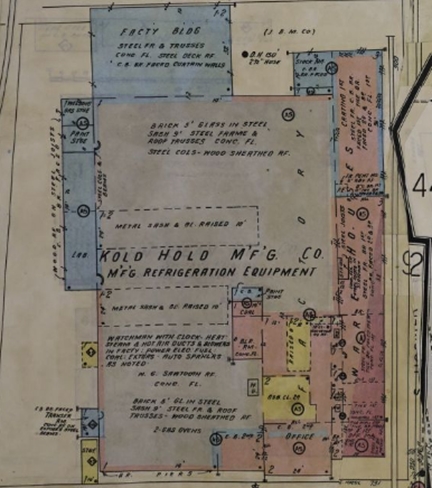
This Sanborn Map is dated 1951. In
late 1945 John Bean purchased from the War Assets Administration one of
the two plants that Nash-Kelvinator occupied during World War Two to
build Hamilton-Standard aircraft propellers. It was twice the size
as the factory shown here. Kold-Hold Manufacturing then occupied
the former John Bean plant. In the 1960s the Tranter Corporation
of Lansing occupied this plant. Today Michigan Imagery, which
manufactures artistic metal signs, occupies the facility. Old
factories never die, they just get new tenants even 100 years after they
were built.
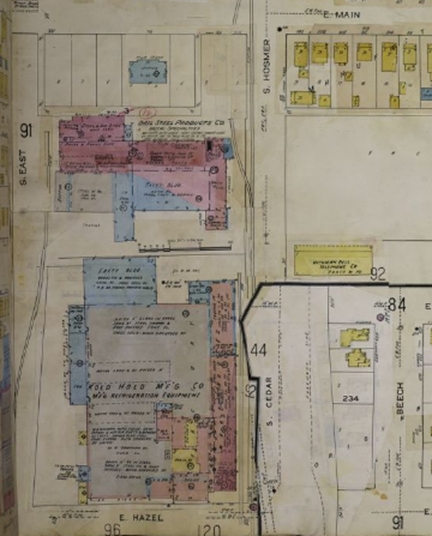
This image shows the general location of the
John Bean plant in Lansing during World War Two. Its address was
715 East Hazel Street. On the east side it was bounded by south Hosmer Street. To the north of the John Bean plant was Dail Steel
Products plant. Not shown, but to the southeast diagonally across
the intersection of Hosmer and Hazel was the Duplex Truck Company.
Lansing is my home town and in September 2021
I returned to photograph the former John Bean plant that made
products to help win World War Two.
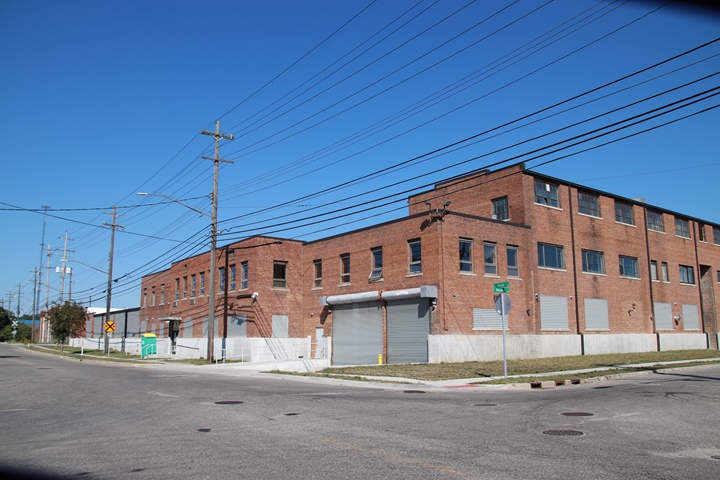
East Hazel Street is on the left. Directly behind me is the location of the former Duplex Truck plant.
Author's photo.
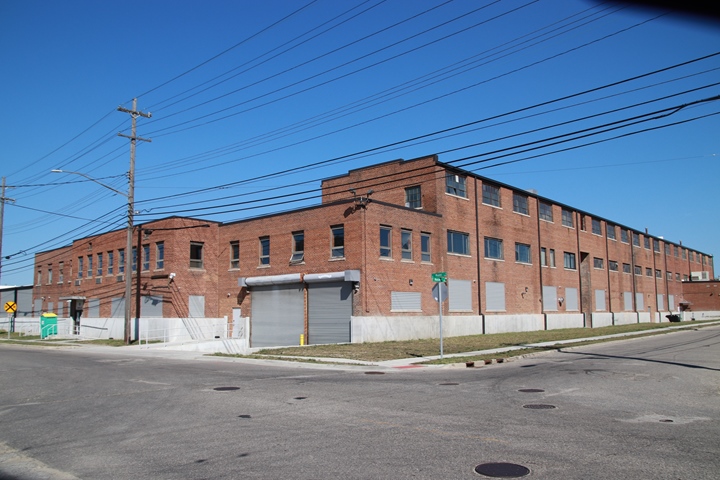
Author's photo.
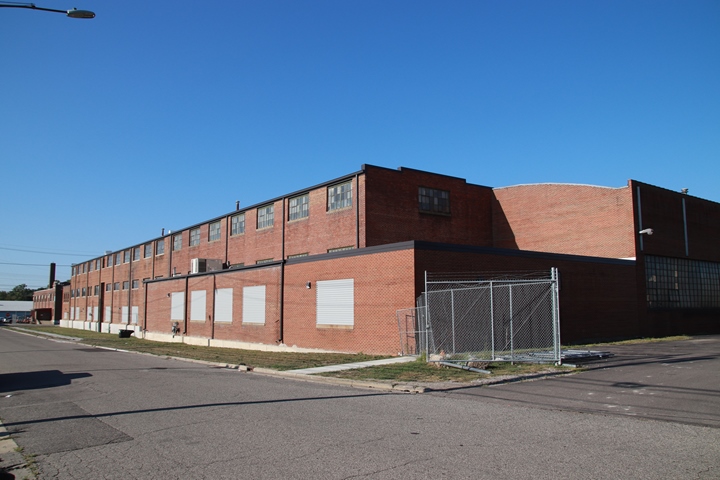
This and the next photo were taken looking
south from the north end of the plant along Hosmer Street.
Author's photo.
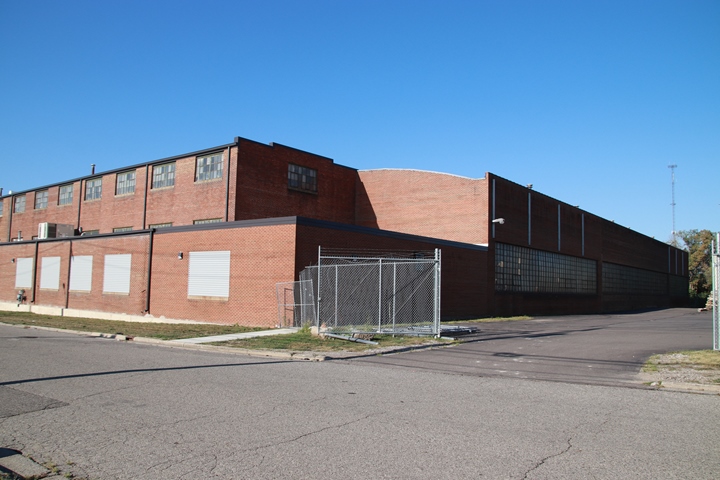
Author's photo.
In 1928 John Bean renamed itself the Food
Machinery Corporation and used the initials FMC to identify itself.
During World War Two, FMC is best known as the original
manufacturer of the LVTs used extensively by both the U.S. Army and
USMC. As FMC expanded and grew, the plant in Lansing became known
as the John Bean Division of the company.
Because the sale of fruit sprayers is a seasonal
business, in 1928 the company purchased several other companies to
diversify the John Bean product line. A wheel alignment company, a
tire changer company, and an automotive brake drum lathe company were
purchased. The company also adapted its fruit sprayer for washing trucks and automobiles.
John Bean built fire apparatus in Lansing
between 1939 and the late 1960s. Then the business was moved to
Tipton, IN and then to Orlando, FL in 1986. John Bean ceased
building fire trucks and apparatus in 1990.
In 1965 the John Bean Lansing plant had a
diversified product line. However, only 9% of the business for its
750 employees was fire equipment. Agricultural equipment made up
55% and automotive products another 35%. Irrigation systems and
pumps made up the rest. In 1974 the John Bean Lansing operation
was closed and moved to Arkansas. Today John Bean, owned by
Snap-on, makes wheel balancers, tire changers, and wheel alignment
equipment.
John Bean World War Two Production:
Table 1 shows that John Bean primarily produced decontamination and
insect spraying equipment for the U.S. Army and U.S. Navy during World
War Two. This was 71% of the total major contracts the company
received during the war. After 1943 it was the sole producer of
this equipment. The remaining $29% was for crash trucks and fire
equipment. Using its own pumps, John Bean began building fire trucks in 1939 as
another way of expanding the use of its pumps. In 1940 its
engineers developed the high-pressure fog system, which used less water
to fight fires. During World War Two John Bean was one of dozens
of companies that produced fire apparatus for the U.S. military.
Table 1 - John Bean Company's
Major World War Two Contracts
The information below
comes from the "Alphabetical Listing of Major War Supply
Contracts, June 1940 through September 1945." This was
published by the Civilian Production Administration, Industrial
Statistics Division. Table added 4-3-2022. |
|
Product - Customer |
Contract Amount |
Contract Awarded
|
Completion
Date |
| Decontamination
Equip - Army |
$635,000 |
12-1941 |
8-1942 |
| Pumps - Navy |
$91,000 |
6-1942 |
6-1942 |
| Fire Equipment -
Navy |
$313,000 |
9-1942 |
3-1943 |
| Trailers - Army |
$155,000 |
11-1942 |
2-1943 |
| Trailers - Navy |
$226,000 |
11-1942 |
5-1943 |
| Chemical
Equipment - Army |
$62,000 |
12-1942 |
5-1943 |
| Fire Truck Parts
- Army |
$834,000 |
1-1943 |
5-1943 |
| Crash Units- Navy |
$1,408,000 |
3-1943 |
7-1944 |
| Decontaminating
Equip - Army |
$404,000 |
4-1943 |
7-1943 |
| Decontaminating
Units - Army |
$1,531,000 |
4-1943 |
12-1943 |
| Decontam Trailers
- Navy |
$133,000 |
4-1944 |
6-1945 |
| Decontam Equip
M3A2 - Army |
$1,178,000 |
4-1944 |
12-1944 |
| Insect Sprayers -
Army |
$255,000 |
6-1944 |
12-1945 |
| Insect Sprayers -
Army |
$165,000 |
7-1944 |
9-1945 |
| Decontam Apprts
Pts - Army |
$250,000 |
12-1944 |
8-1945 |
| Decontam
Apparatus - Army |
$198,000 |
12-1944 |
11-1945 |
| Decontam Equip
M3A1 - Army |
$204,000 |
12-1944 |
9-1945 |
| Decontam Equip
M3A2 - Army |
$123,000 |
1-1945 |
11-1945 |
| Decontam Equip
Pts - Army |
$288,000 |
2-1945 |
8-1945 |
| Insect Sprayers -
Army |
$227,000 |
2-1945 |
1-1946 |
| Decontam Unit
Parts - Army |
$70,000 |
4-1945 |
4-1946 |
| Decontam Equip
Pts - Army |
$70,000 |
6-1945 |
1-1946 |
| Total |
$8,820,000 |
|
|
John Bean built an unknown number of Class 125
fire trucks on International Harvester 1-1/2-ton 4x2 chassis for the
USAAF for fighting aircraft fires. The Bean Royal 55 pump was used
not only in the units John Bean produced, but by all of the other fire
apparatus companies building the same type of truck.
The most well documented fire apparatus John
Bean made during World War Two were 1,080 trucks on International M-3L-4
1-1/2-ton 4x4 trucks for the U.S. Navy. These were built under
U.S. Navy contract NOA 397 for an amount of $1,408,000. Dividing
the 1,080 units into the total dollar value of this contract gives an
average unit cost of $1,303.
| |
|
U.S Navy Designation |
IHC Model Number |
Type and Body Manufacturer |
Wheelbase (Inches) |
Quantity |
IHC Serial Numbers |
|
FFN-1 |
M-3L-4 (269) |
Crash (Bean) |
139 |
400 |
2763-3162 |
|
FFN-2 |
M-3L-4 (269) |
Crash (Bean) |
139 |
230 |
3563-3792 |
|
FFN-3 |
M-3L-4 (269) |
Crash (Bean) |
139 |
450 |
3793-4242 |
| Total |
|
|
|
1,080 |
|
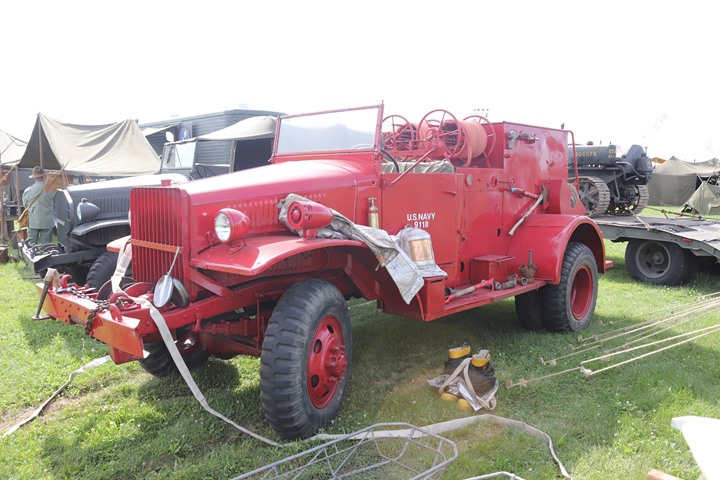
This is what the John Bean-built fire
apparatus looked like on the International 4x4 truck. The FFN
series contained a 435 gallon water tank, a high pressure John Bean
pump, twin high pressure hose reels, and two John Bean fog nozzles.
All three types are essentially the same with the exception that the
FFN-3 could produce foam. The FFN-1 and FFN-2 could be retrofitted
with a foam pump. Author's photo.
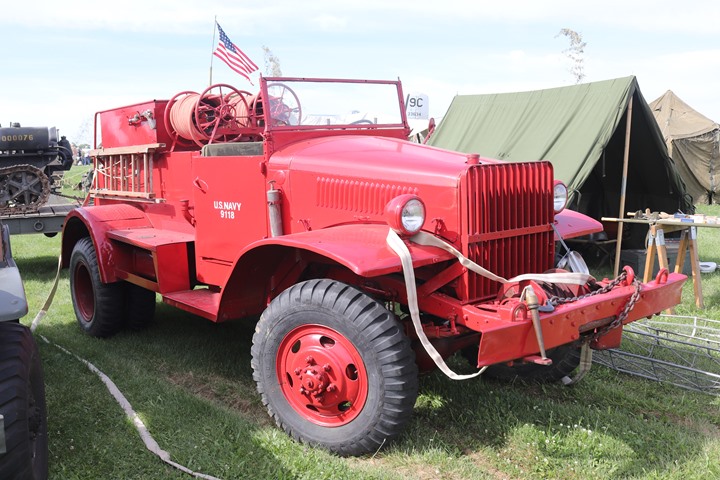
Author's photo.
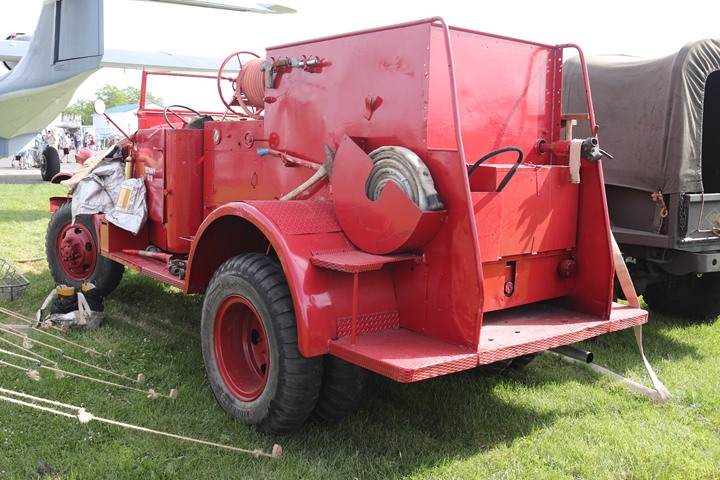
Author's photo.
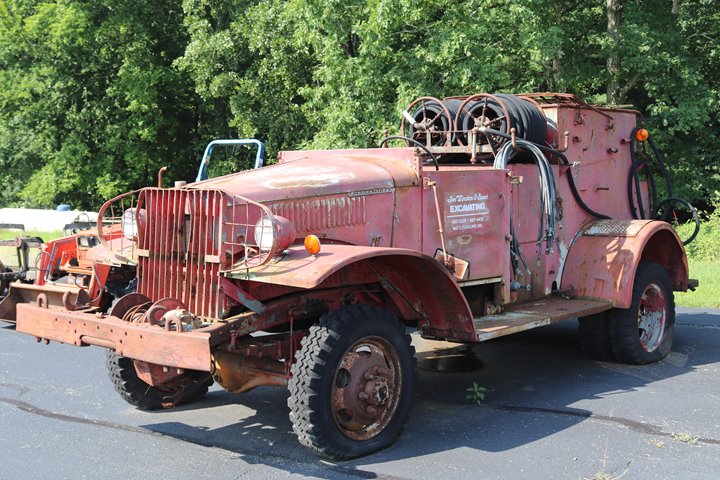
This un-restored unit is in the parking lot
of a military museum in Tennessee. Author's photo.
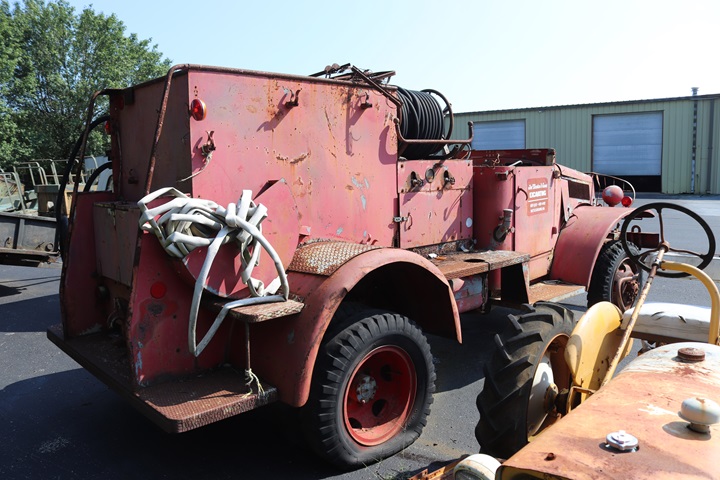
Author's photo.
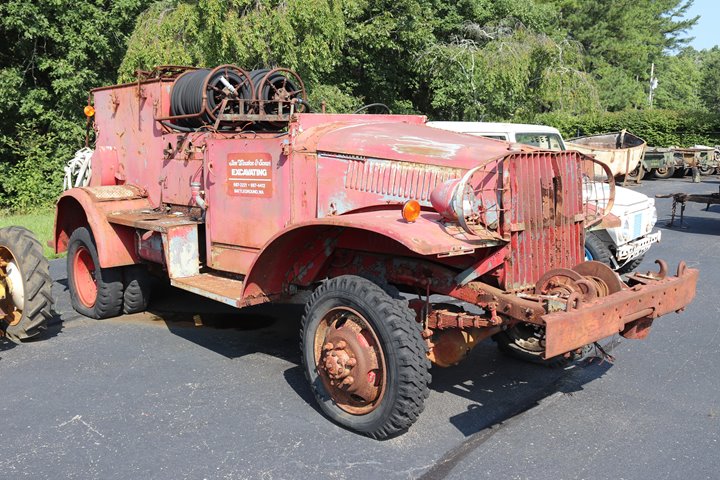
Author's photo.
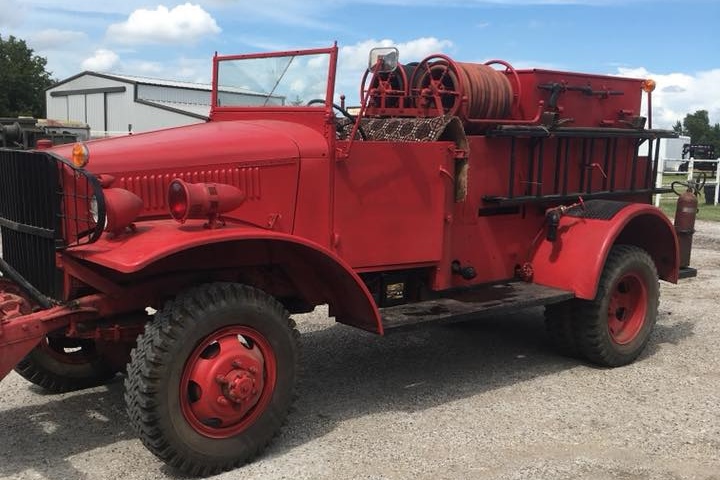
This John Bean FNN-3 fire truck is operated
by the Commemorative Air Force's Ground Forces Detachment. Photo
courtesy of Commemorative Air Force's Ground Forces Detachment.
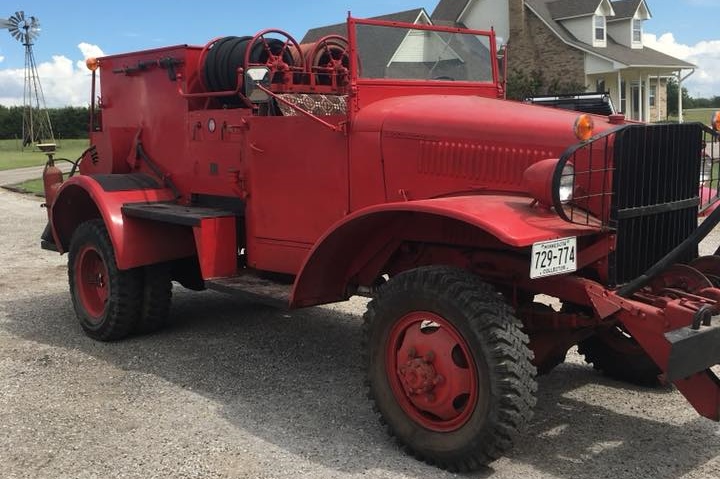
Photo courtesy of Commemorative Air
Force's Ground Forces Detachment.

Photo courtesy of Commemorative Air
Force's Ground Forces Detachment.
Other Lansing Companies that contributed
to winning World War Two
|














